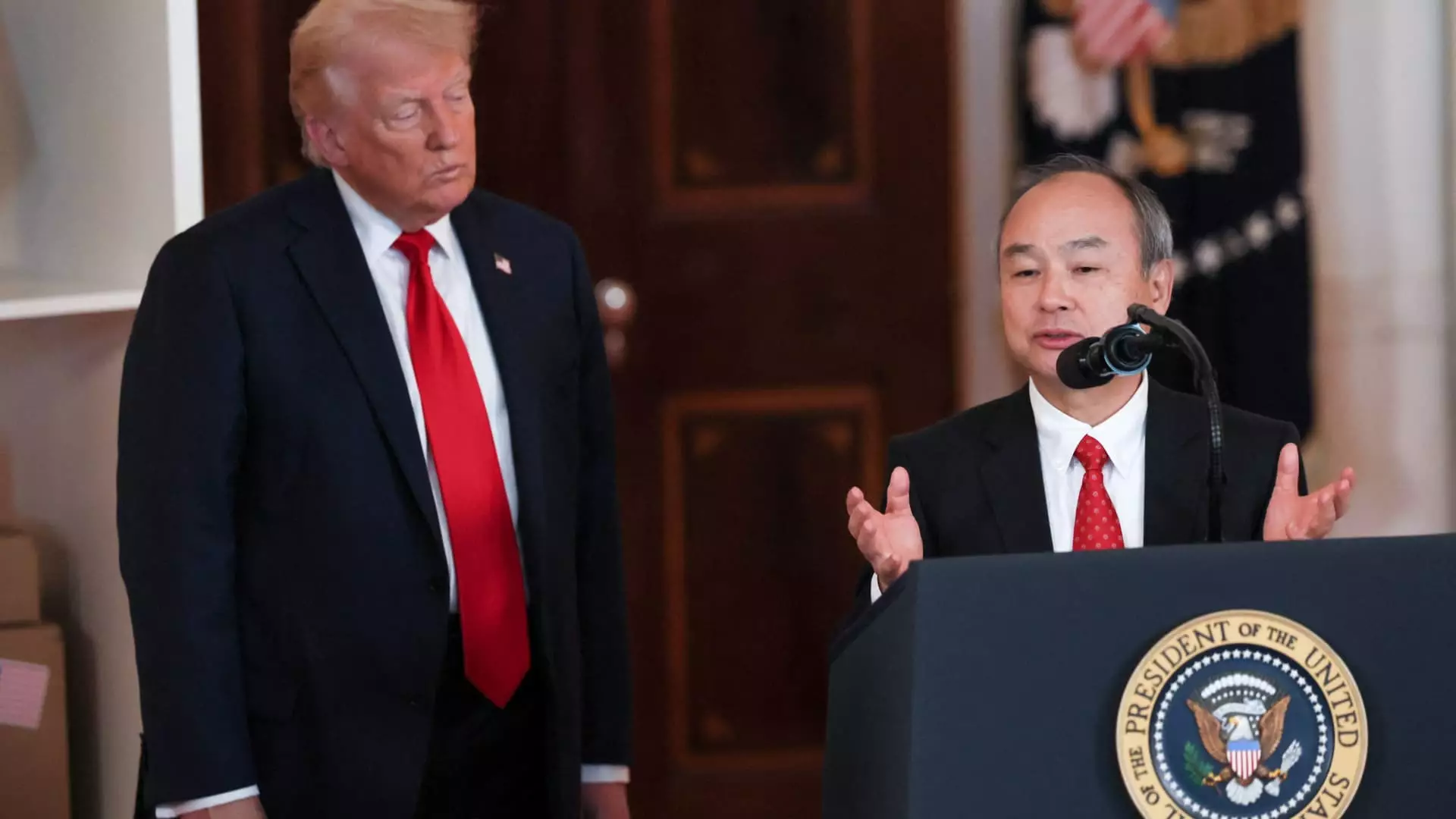SoftBank’s Vision Fund has recently unveiled its financial results for the fiscal year ending in March, and the figures reflect a disheartening decline. The document reveals a significant drop in investment gains, plummeting by 40% to 434.9 billion yen from the previous year’s 724.3 billion yen. SoftBank’s overarching narrative has often revolved around technological supremacy and making bold investments, but the current numbers starkly highlight the volatility and unpredictable nature of its investment strategy. The Vision Fund, rather than showcasing a promising trajectory, appears to be veering towards a troubling downturn, driven by soaring expectations that have not materialized into concrete results.
The Illusion of Profitability
While the fourth quarter saw a gain of 26.1 billion yen—largely buoyed by the performance of TikTok’s parent company, ByteDance—this fleeting success does little to mask the more alarming pretax loss of 115.02 billion yen ($777.7 million) over the fiscal year. Such disparities raise serious concerns about the quality of SoftBank’s investment decisions. The Vision Fund has become emblematic of modern investment folly, where backers chase shiny new objects like AI without due diligence into their long-term viability. The recent performances of companies like AutoStore indicate that not all that glitters is gold in the tech investment arena.
Inconsistent Gains in an Unstable Market
SoftBank’s investment portfolio has shown signs of struggle as it grapples with both public and private market volatility. Though gains were made with investments in companies like Didi and Coupang, the losses experienced from others have created a cocktail of uncertainty. The market has undeniably shifted, and the reality is that SoftBank’s once-mighty investment division now appears inconsistent and indiscriminate. The company’s stock has suffered a notable 17% decline this year, illustrating that the volatility isn’t simply a passing phase but rather a persistent trend borne out of wider macroeconomic challenges.
Chasing the AI Dream
Amidst the gloom, SoftBank founder Masayoshi Son remains steadfast in his quest to position the firm as a leader in the burgeoning arena of artificial intelligence. With a hefty $30 billion investment into OpenAI and plans to acquire Ampere Computing—aiming to bolster its dominance in AI infrastructure—the narrative is clear. Yet, it raises an important question: is SoftBank genuinely preparing for an AI revolution, or is this ambition merely a desperate grasp for relevance? The firm’s hasty movements toward securing AI-focused investments suggest an underlying anxiety about its current standing.
The Ballooning Challenges Ahead
The ambitious Stargate project, which aims to funnel hundreds of billions into AI infrastructure, paints a grand vision. However, it is riddled with uncertainty. Bloomberg recently reported rising skepticism among financial players about investing in data centers, a vital component of the Stargate initiative. This skepticism, coupled with SoftBank’s ambiguous financing strategies, casts a shadow over the firm’s future endeavors. Are Goto’s assertions of “progress” grounded in reality, or are they the embers of a fading fire struggling against the wind of economic uncertainty?
The Impact of Legacy Investments
Interestingly, while the Vision Fund has struggled, SoftBank reported its first annual profit in four years—1.15 trillion yen to be specific. This unexpected boost largely stemmed from divergent success stories in its older investments such as Alibaba and T-Mobile. This contrasts sharply with the troubling performance of the Vision Fund and accentuates the precarious balancing act that SoftBank must navigate moving forward. The stark difference between past profitability and current investment woes begs the question of whether SoftBank’s aggressive pivot towards AI is a wise bet or a blind leap into an uncertain future. The validity of SoftBank’s long-term viability hinges on this.
SoftBank is caught in a paradox: its past wins have helped it avoid immediate disaster, but the myopic focus on technological aspiration without solid foundations could lead to detrimental outcomes. The Vision Fund, once seen as a harbinger of innovation, now stands at a crossroads, representing both intoxicating potential and perilous risk.

